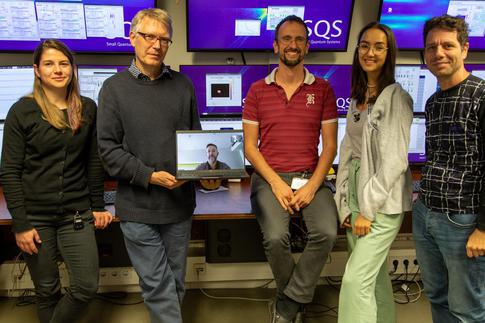XFEL: First light at new SXP instrument
First light at new SXP instrument

Scientists and collaborators at European XFEL celebrating SXP's first light in the experimental hutch [Credit: European XFEL]
SXP is the third European XFEL instrument using soft X-rays, which have wavelengths between 0.4 and 4.7 nm, about one hundred times shorter than the wavelength of visible light. With SXP, the total number of instruments at European XFEL will increase to seven. The other four instruments are using hard X-rays, with even shorter wavelengths which allow to take pictures of atomic resolution.
At SXP, users will be able to implement new experimental techniques that will extend the portfolio currently available at the European XFEL’s other two soft X-ray instruments SCS and SQS. This will be realized by allowing them to integrate their own experiment stations at the SXP instrument, which they will operate themselves, allowing greater flexibility over the experiments they can conduct.
First experiments at the new instrument are expected to start in 2023, with a technique called time and angle-resolved photoelectron spectroscopy on solids being the first to be implemented. SXP will then be one of very few places in the world where this technique is used in combination very short – femtosecond – soft X-ray pulses. It will allow experiments that provide an advanced understanding of the electronic, magnetic as well as the chemical and atomic structure properties of solid materials thanks to the femtosecond time resolution.
“Basic research at SXP will help to address grand challenges., for example, our studies of catalysts, new batteries and light harvesting materials will contribute to develop environmentally friendly energy production pathways” says Manuel Izquierdo, group leader at the SXP instrument. “I hope we will be able to study solid surfaces and interfaces in ways that were previously not possible.”
Science contact
Manuel Izquierdo
E-mail: manuel.izquierdo@xfel.eu
